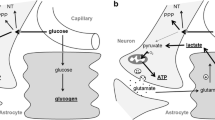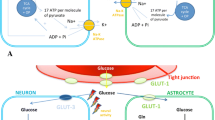Abstract
Objective. Hyperglycemia aggravates ischemic brain damage. Since catecholamines increase hepatic gluconeogenesis, resulting in hyperglycemia, we investigated whether norepinephrine and dopamine elevate arterial blood glucose, thereby increasing pericontusional cortical glucose and lactate concentrations and brain edema in brain-injured rats.
Design. Prospective, randomized, controlled animal study.
Subjects. Male Sprague Dawley rats.
Interventions. Physiological saline solution, norepinephrine, or dopamine were infused intravenously for 90 min beginning 4.5 h after inducing a focal cortical contusion. Blood glucose, lactate, and pericontusional cortical extracellular glucose and lactate were determined before, during and up to 60 min after the infusion period. Thereafter brains were removed to assess hemispheric water content.
Measurements and results. Continuous norepinephrine and dopamine infusion significantly increased pericontusional glucose concentrations, being mostly sustained by norepinephrine (NaCl: 1.3±0.2, dopamine: 2.7±0.2, norepinephrine: 4.8±1.1 mM). While arterial blood glucose was only significantly elevated in norepinephrine-treated rats from 8.6±0.6 to 12.6±1.6 mM, the extracellular to blood glucose ratio was significantly increased in dopamine- and norepinephrine-treated rats (0.28±0.01 and 0.38±0.05 vs. 0.17±0.01). Plasma and pericontusional lactate remained unchanged, and brain edema was similar in all groups.
Conclusions. Norepinephrine and dopamine significantly increased pericontusional glucose concentrations which did not elevate extracellular lactate and aggravate underlying posttraumatic edema formation. In addition to possibly increased facilitated endothelial glucose transport, the elevated extracellular to blood glucose ratio suggests a passive concentration- and pressure- dependent entry via a damaged blood-brain barrier. This might contribute to the observed reversible increase in extracellular glucose.
Similar content being viewed by others
Author information
Authors and Affiliations
Additional information
Electronic Publication
Rights and permissions
About this article
Cite this article
Stover, J.F., Sakowitz, O.W., Thomale, U.W. et al. Norepinephrine-induced hyperglycemia does not increase cortical lactate in brain-injured rats. Intensive Care Med 28, 1491–1497 (2002). https://doi.org/10.1007/s00134-002-1431-2
Received:
Accepted:
Issue Date:
DOI: https://doi.org/10.1007/s00134-002-1431-2




